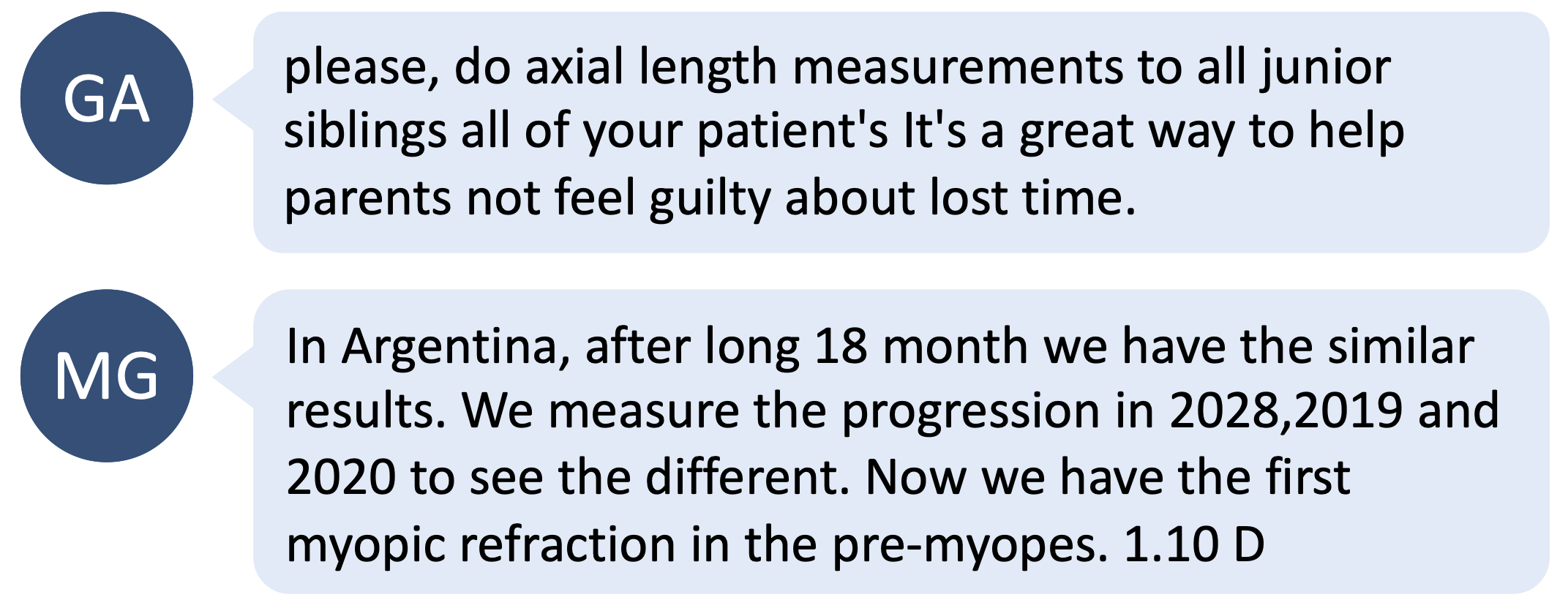Myopia prevalence is increasing around the world, and the past two years of pandemic lockdowns and home-based schooling has unfortunately led to many observations of further increased rates of myopia in children. Here, PC shares a case illustrating this situation.

According to the CLEERE study, the average axial growth for a fast myopia progressor is 0.22mm/year.2 The patient in this case experienced approximately 2.50D of myopia progression in one year. This is corroborated by the axial length change of 0.95mm in that period - almost 5 times the rate of the average fast myopic progressor. This is speedy myopic eye growth indeed.

What contributes to myopia progression?
Intense near work has been found to drive myopia development and progression.3 The hyperopic defocus from deficient accommodative response is considered to be a mechanism linking near work and myopia.4 A meta-analysis also showed children who perform more near work have 80% higher risk of having myopia.3 As children spent most of their time indoors and engaged in a much greater amount of screen-based tasks during lockdown periods, it is unfortunately not surprising to see an increase in myopia prevalence.
Management for this patient
In this case, PC prescribed orthokeratology lenses with low-dose atropine to form his myopia management strategy. Combining low-dose atropine with ortho-k has been shown to slow axial elongation more effectively than ortho-k lens alone.5
PC also notes that the child had become more esophoric with atropine use. This may seem counter intuitive as one would assume that with atropine relaxing the accommodation system, it could improve esophoria. However, there have been some case studies exploring how low-dose atropine may worsen the esophoric condition.6,7 This is explored more thoroughly in the Case Study What Happens To Binocular Vision During Cycloplegia.
An important note on this case is PC mentioned how the axial length measurement confirmed that the myopic shift was genuine. This highlights the importance of measuring the whole eye in myopia, to determine what has contributed to the myopic shift - in this case it was the axial length, but it is also important to measure the cornea and ensure an accurate refraction to avoid any pseudomyopia.
Measuring axial length for all patients

A lesson from this case is that having baseline axial length data is useful when monitoring children in their pre-myopic stage. It gives greater confidence for diagnosing true myopia (as opposed to pseudomyopia) and in confirming progression. It also forms a useful tool to educate parents on the axial length growth of their children and reinforce the importance of myopia management.
Take home messages
- Axial length data is a crucial part of the clinical picture in myopia progression, helping to determine the contributing factor to a shift in myopic refractive error and also helping to rule out pseudomyopia.
- Combining ortho-k and low-dose atropine has been shown to have additive efficacy and hence can be a useful strategy for fast myopia progressors.
- A child's binocular status (e.g. esophoria) may change with the chosen intervention, such as low-dose atropine.
Further reading

About Kimberley
Kimberley Ngu is a clinical optometrist from Perth, Australia, with experience in patient education programs, having practiced in both Australia and Singapore.

About Connie
Connie Gan is a clinical optometrist from Kedah, Malaysia, who provides comprehensive vision care for children and runs the myopia management service in her clinical practice.
This content is brought to you thanks to an unrestricted educational grant from

References
- Wang J., Li Y., Musch DC, et al. Progression of Myopia in School-Aged Children After COVID-19 Home Confinement. JAMA Ophthalmol. 2021;139(3):293–300. (link)
- Hernández, J., Sinnott, L., Brennan, N., Cheng, X., Zadnik, K., & Mutti, D. Analysis of CLEERE data to test the feasibility of identifying future fast myopic progressors. Invest Ophthalmol Vis Sci. 2018. (link)
- Huang HM, Chang DS, Wu PC. The association between near work activities and myopia in children—a systematic review and meta-analysis. PloS one. 2015 Oct 20;10(10):e0140419. (link)
- Benavente-Pérez A, Nour A, Troilo D. Axial eye growth and refractive error development can be modified by exposing the peripheral retina to relative myopic or hyperopic defocus. Investigative ophthalmology & visual science. 2014 Oct 1;55(10):6765-73. (link)
- Gao C, Wan S, Zhang Y, Han J. The Efficacy of Atropine Combined With Orthokeratology in Slowing Axial Elongation of Myopia Children: A Meta-Analysis. Eye Contact Lens. 2021 Feb 1;47(2):98-103. (link)
- Jahan S, Kothari M, Solanki M. Treatment of 0.01% atropine eye drops induced convergence excess esotropia and rebound myopia managed with 1% atropine eye drops. Indian Journal of Ophthalmology-Case Reports. 2021 Jan 1;1(1):140. (link)
- Kothari M, Modak M, Khan H, Jahan S, Solanki M, Rathod V. Convergence excess consecutive esotropia associated with 0.01% atropine eye drops usage in patients operated for intermittent exotropia. Indian Journal of Ophthalmology. 2020 Apr;68(4):653. (link)











